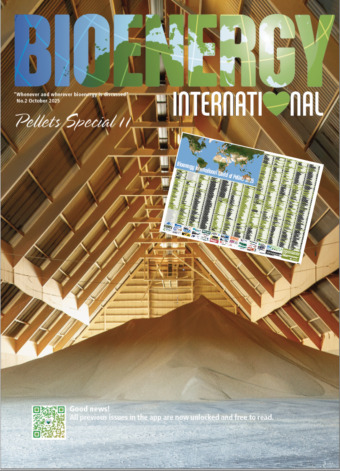In the United States (US), Victor Valley Wastewater Reclamation Authority (VVWRA) facility in Victorville, California (CA) is now the first wastewater treatment plant in State to inject renewable natural gas (RNG), made from both wastewater solids and food waste, into a utility pipeline.

The project is a Public-Private Partnership (PPP) involving Victor Valley Wastewater Reclamation Authority (VVWRA), Anaergia Services LLC, a subsidiary of Canadian biogas technology developer Anaergia Inc., financing partners North Sky Capital LLC, and Live Oak Bank, gas utility Southwest Gas Holdings, Inc., and construction partner W.M. Lyles.
The facility is the first wastewater treatment plant (WWTP) in California (CA) to inject RNG made from both wastewater solids and food waste into a utility pipeline.
The PPP enabled the project to be delivered in record time and enhance VVWRA’s wastewater infrastructure with greater capacity and resiliency.
These infrastructure improvements provide operational and capacity resiliency, greater operational flexibility, and the increased digester capacity we’ll need to serve the future growth of our community. In addition, the ability to process food waste and create RNG benefits our agency economically, said Bill Holland, Chairman of the VVWRA Board.
The Anaergia subsidiary upgraded VVRWA’s existing wastewater treatment plant, retrofitting existing anaerobic digesters with its high-throughput and high-efficiency “Omnivore” technology and biogas conditioning and upgrading technology package that produces pipeline-quality RNG.
The renewable natural gas being created here will be used as a carbon-negative transportation fuel to displace petroleum and to help California achieve its clean air and climate goals while supporting California clean-tech jobs, said Richard W. Corey, Executive Officer, California Air Resources Board (CARB).
Co-processing food waste and biosolids
The additional technologies allow the facility to not only process wastewater, but also take in food waste collected by the region’s waste haulers, preventing methane emissions from these sources and creating renewable, carbon-negative fuel to replace fossil natural gas.
The facility will be capable of producing and injecting up to 320 000 MMBTU of RNG into the region’s gas utility pipeline each year.
Helping our customers and the communities we serve to reduce emissions is very important to us. We are very proud of our collaboration with VVWRA to introduce RNG to the Southwest Gas system. This carbon-negative RNG flowing through our system will make a major difference. The facility is slated to create enough renewable natural gas to offset the emissions of more than 2 000 homes each year. We are pleased to be part of this important project, which advances communities towards a clean-energy future, said John Hester, CEO, Southwest Gas.
Compliance with Senate Bill 1383
The new plant will assist local municipalities in complying with California’s Senate Bill 1383 regulations, which require every municipality to divert residents’ and businesses’ food and other organic waste from landfills, with the goal of reducing the amount of organic waste landfilled by 75 percent by 2025.
Private investments in green innovations are helping us recycle more food and yard waste into valuable new products. These strong partnerships are critical to growing California’s circular economy and creating a safer climate, said Rachel Machi Wagoner, Director, CalRecycle.
State agencies estimate that at least 50-100 new or expanded facilities will be needed to annually recycle the over 20 million tonnes of organic waste that will be collected from residents and commercial businesses and diverted from landfills as the law is implemented.
Under Senate Bill 1383, every California municipality must now find a way to reduce food waste and other organic waste going to landfills, said Andrew Benedek, Chairman, and CEO of Anaergia.
Landfills are California’s number one source of methane emissions, according to flyover readings, and Senate Bill 1383 was designed to combat that issue.
Anaergia offers a unique set of technologies that convert existing infrastructure at wastewater treatment plants into highly efficient systems capable of treating both wastewater residual solids as well as food waste. In this way, existing infrastructure can be extended to serve new California requirements in a very efficient way. The net result is beneficial to all concerned, as it lowers the cost of operating a wastewater plant, helps the municipality meet the organic waste disposal requirements, and helps our planet by creating carbon-negative fuel. Our partnership with VVWRA is an example for the entire state on how to solve the current requirements efficiently, said Andrew Benedek.


